Contracture –
The shortening of muscle tissue which results from excessive scarring and causes limited mobility.
Debridement –
The mechanical, chemical or surgical removal of dead tissue that does not come off easily during the healing period.
Dermis –
The layer of the skin located underneath the dermis which is comprised of connective tissue, nerve endings and blood vessels.
Dressings –
A method of treatment in which bandage or gauze is wrapped around the burn to reduce the risk of infection.
Early Excision – A surgical procedure used to remove unnecessary tissue to prepare for a skin graft.
Epidermis – The outermost, protective layer of the skin.
Eschar –
A piece of dead tissue.
Escharotomy – A surgical procedure in which an incision in made into the burned skinned to allow proper circulation.
First degree burn –
Affects the epidermis and may cause redness, peeling or minor swelling.
Fourth degree burn –
The most severe type of burn which causes damage to all layers of the skin, nerves, tissue, muscles and, in some cases, the bone. Also referred to as a ‘major burn.’
Hypertrophic scar –
Overgrown, raised scar tissue that stays within the injured area and becomes smaller overtime.
Hypothermia –
A condition in which body temperature drops. For burn survivors, this occurs when a portion of the skin, which acts as the human body’s natural blanket, is destroyed.
Hypovolemia –
Decreased blood volume. Due to large wounds, major burn survivors are susceptible to hypovolemia.
Immobilization –
Prohibiting the mobility of a joint or limb to assist the healing process.
Keloids –
Overgrown, raised scar tissue that spreads beyond the injured area and is usually flesh or pink colored. Can limit mobility.
TBSA –
Stands for total body surface area and usually refers to the portion of the body affected by the burn injury.
Third degree burn –
Destroys the epidermis and dermis and causes damage to the nervous system. Skin typically looks charred and leathery. Also referred to as a ‘major burn.’
Second degree burn –
Affects the epidermis along with parts of the dermis and can cause serious pain, swelling, blistering, damage to bodily functions and damage to mobility.
Sepsis –
A life threatening blood infection caused by bacteria which can lead to shock. Symptoms include chills, decreased urination, hyperventilation, warm skin, lightheadedness and shaking.
Skin graft –
A process in which healthy skin is transferred to the injured area to help with the healing process.
Subcutaneous tissue –
Located underneath the dermis and is comprised of loose connective tissue.
Tetanus –
A life threatening disease caused by bacteria which enters the body through wounds. Burn survivors are susceptible to tetanus because the bacterium is resistant to high temperatures.














